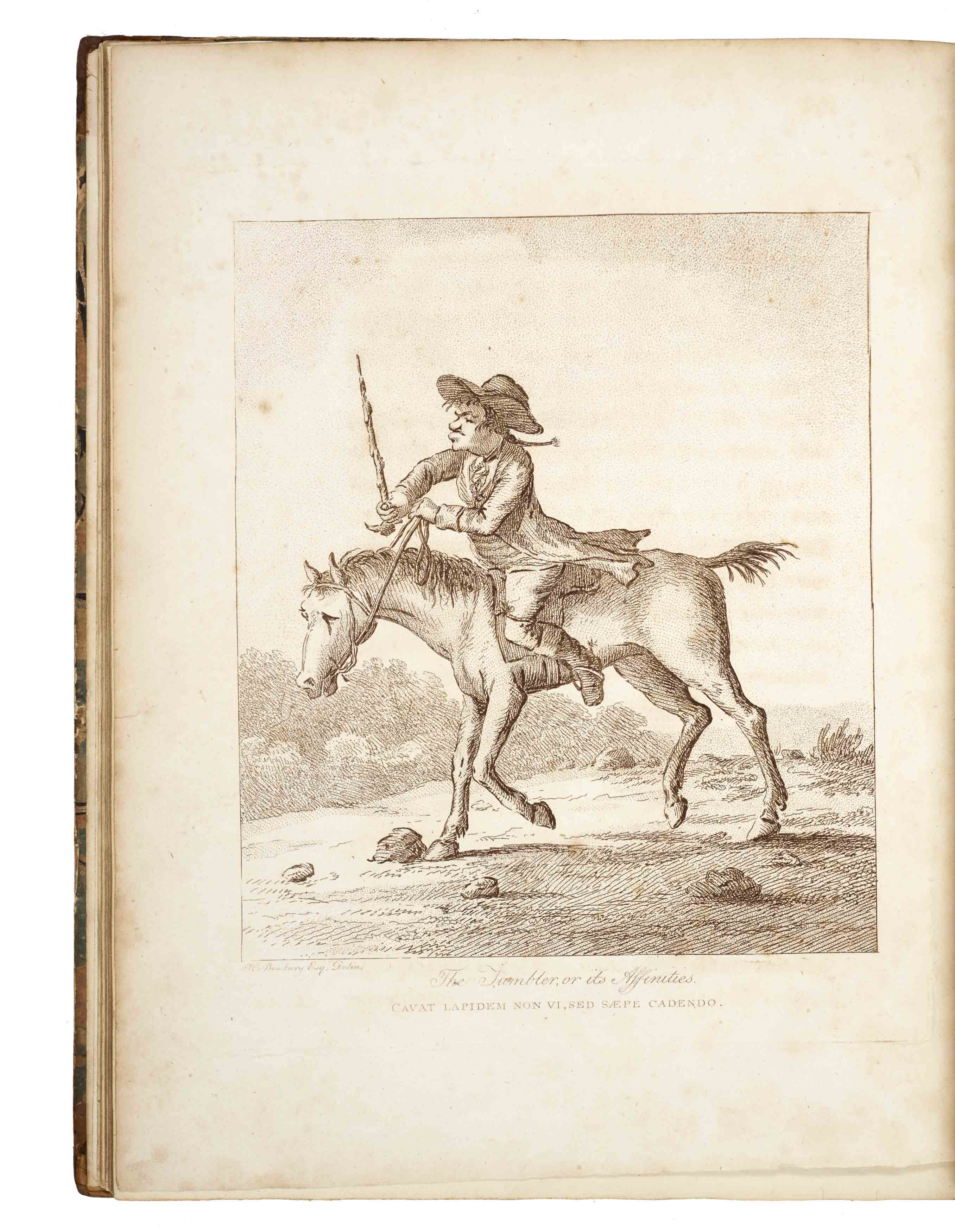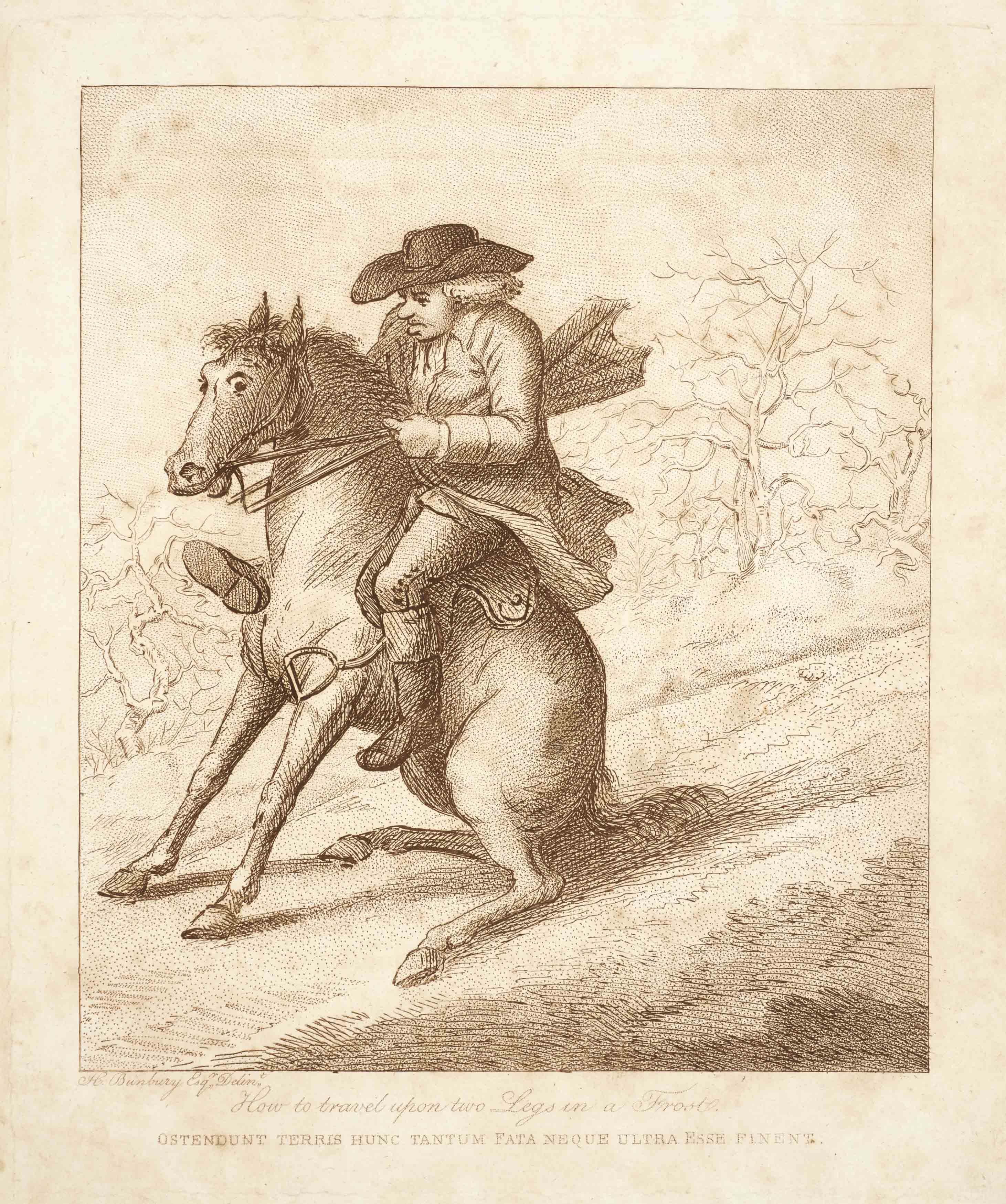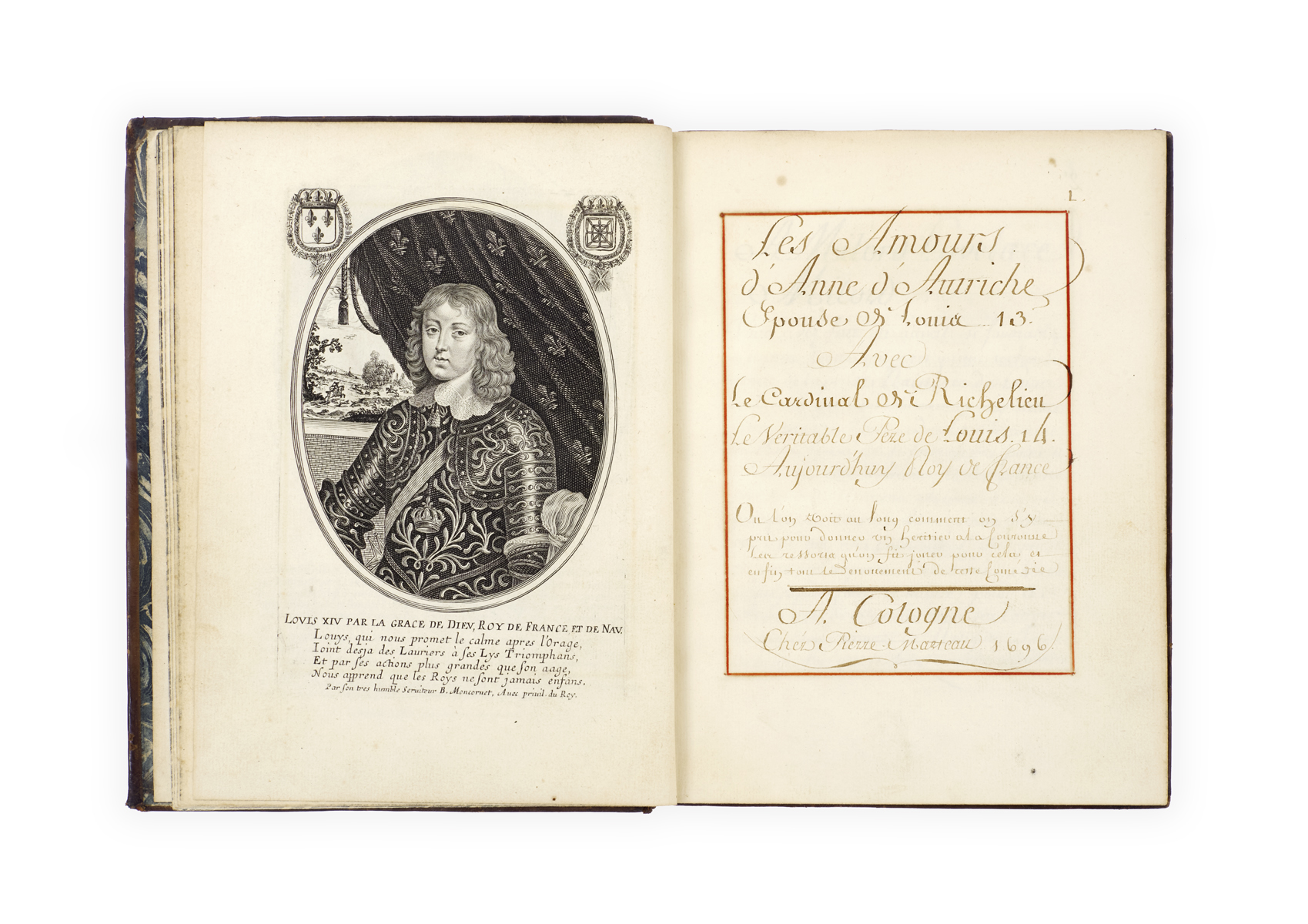


[BUNBURY, Henry William.] ‘GAMBADO, Geoffrey’.
Annals of Horsemanship, containing Accounts of accidental Experiments and experimental Accidents, both successful and unsuccessful, communicated by various Correspondents … together with most instructive Remarks thereon, and Answers thereto ... first published … illustrated with Cuts by the most eminent Artists.
London, W. Nicholson for W. Baynes, 1808.
Folio, pp. xvii, [1 (blank)], 81, [1 (blank)], with etched frontispiece and 16 etched plates; light spotting to plates and a little offsetting, a few old repairs to some plates; a very good copy in contemporary English half calf with marbled sides, sympathetically rebacked in calf, recent gilt black morocco lettering-piece to spine; rubbed with a few slight chips and bumps at extremities; armorial bookplate of Francis Freeling to upper pastedown.

Added to your basket:
Annals of Horsemanship, containing Accounts of accidental Experiments and experimental Accidents, both successful and unsuccessful, communicated by various Correspondents … together with most instructive Remarks thereon, and Answers thereto ... first published … illustrated with Cuts by the most eminent Artists.
Third edition of Bunbury’s satirical work with humorous etchings. First published in 1791 and often presented as a continuation of Bunbury’s Academy for grown Horsemen (published in 1784 also under the name Gambado), the Annals of Horsemanship is a parody of Arthur Young’s Annals of Agriculture, a periodical published in forty-five volumes from 1784 to 1815, though by the early nineteenth century increasingly struggling to produce sufficient material. Presented as ‘Master of the Horse to the Doge of Venice’, the pseudonymous Gambado receives and responds to letters with bizarre proposals for riding and horsemanship, illustrated by Bunbury’s famous etchings.
Hailed by Horace Walpole as ‘the second Hogarth’ (Anecdotes of Painting in England IV, p. viii), Henry William Bunbury (1750–1811) avoided politics and controversy to produce satires and caricatures drawn largely from his tours of Europe, though several works show a keen interest in equestrianism, perhaps under the influence of his elder brother Sir Charles Bunbury, co-founder of the Oaks and the Derby and long-serving Steward of the Jockey Club.
From the library of Sir Francis Freeling (1764–1836), a fellow of the Society of Antiquaries and founding member of the Roxburghe Club.
Cf. Mellon 89 (for a separate edition of the plates); Evans, Catalogue of the curious, choice, and valuable Library of the late Sir Francis Freeling (1836), lot 1294 (this copy, with Academy for grown Horsemen).

